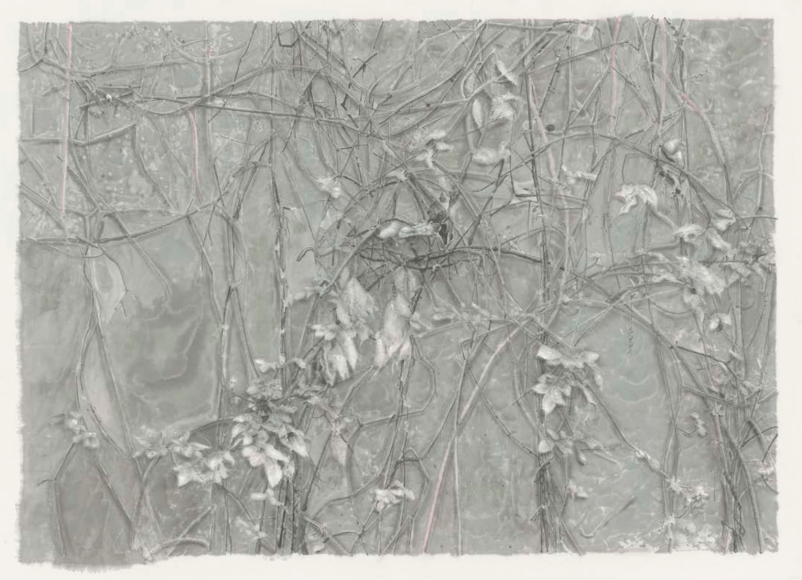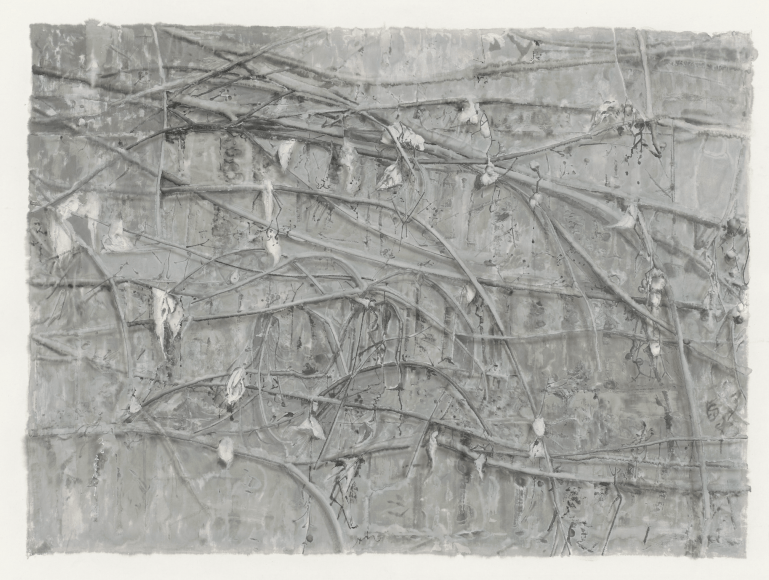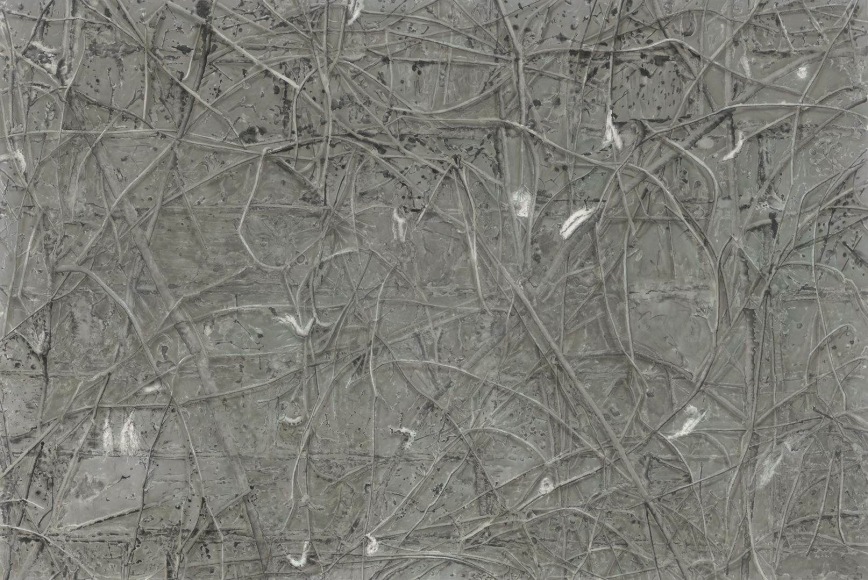Chambers Fine Art is pleased to present a solo exhibition of Lu Hui's recent works at the Yangtze Nanjing Contemporary Art Fair.
Lu Hui was born in Pizhou, Jiangsu in 1977. He graduated from the Nanjing Art Institute in 2003 and now lives and works in Nanjing.
After years spent exploring techniques of ink and landscape painting, Lu Hui found his focus on the subject of what he calls “micro-landscape”. Lu pays special attention to subtle details found in the natural world: a clump of duckweed in a pond, wildflowers, a withered tree or a falling leaf. In portraying these subjects, Lu imagines himself to be a telephoto lens of a camera. His process involves a meticulous observation of scenes from nature, which he then delicately recreates in his ink paintings. To the artist, the painting process also involves self-examination. According to Lu, “in the process of shaping my work, I combine some of the techniques of Western classical painting and also elements of photography. Chinese landscape painting focuses on expression, as well as depicting vast, expansive landscapes, rather than the depiction of details and subtleties. Traditional Chinese landscapes are macroscopic and outward. However, I prefer to express myself inwardly.”
Known as the capital of six dynasties, Nanjing has long been an important city of painting and calligraphy in southern China. The influence of traditional Chinese painting and calligraphy within this historical city have had a great impact upon Lu Hui's understanding of art. “The exquisite beauty of paintings from the Song dynasty always have attracted me. That’s why I am very attentive to the details of every single branch and leaf. From calligraphy, I also learned the way that how one brushstroke forms a shape, and there are multiple movements that make up one stroke. In one stroke of calligraphy, the movement from touching the paper to leaving the paper is rich and varied."
Lu Hui is well-versed in meticulous ‘gong-bi’ brushwork techniques, along with the more expressive, freehand brushwork in traditional painting, and can freely transform and combine these two important styles in his work. And yet, takes his process further, as he is fascinated by how subtle differences in amount of water in his brush can result in different shades of ink color. The precision involved in controlling these proportions has become an integral part of his work. He describes his painting process: "my painting process grows out of nothing, and then falls back into nothing. I will draft out every detail as much as possible, and then gradually dissolve or soften these details according to the needs of the picture.”
Artist Statement
Broken Walls, Grass and Vines
I live in Nanjing, a city with a long history and profound cultural heritage.
Nanjing has a very famous Ming City Wall. It was a palace wall built during the Ming Dynasty and one of the most magnificent structures in China after the Great Wall. If you walk under the wall, you can see networks of withered vines on the wall. They reveal trace of time and tenacity of life.
If you look closely at the withered vines, you will find that they were rooted inside the concrete brick wall for hundreds of years or even longer. Through all these years, they have endured wind, rain and sun. Together with the old city wall, they have recorded the evolution of human civilization.
There is an excerpt from the Japanese book "Complete Works of Supplementary Nobunaga":
Seeing beautiful cherry blossoms in full bloom, I feel that it is very beautiful and is the heart of knowledge. To understand the beauty of cherry blossoms, and move my heart, this is the "sorrow of things".
In China, there is also a saying: "vessels are used to carry Dao (way of living) and objects are used to convey emotions", which expresses the concept of traditional Chinese artistic creation, and pays attention to conveying a certain taste and realm through morphological language, reflecting an aesthetic taste. I have always liked to depict the edges and corners of a landscape, especially the grass and vines that are easily overlooked. I hope that through the depiction of their subtle details, I can convey a kind of awe and reverence for the existence of life. This not only represents my own experiences in the real world, but it is also what I most want to achieve in my work.
During my creative process, I intentionally compress the space between the vines and the old city wall, creating a sense of flatness and abstraction. I hope that the composition could reality and nature, but at the same time would convey a sense of history. I use traditional ink and wash techniques, but after many repetitions, I often purposely work in an opposite manner to tradition. This brings many unexpected surprises in my work.
I paint very slowly. It seems to everyone that this type of painting must be very laborious, but I actually enjoy it myself; I especially like the meticulous work. I was born to a medical family. Since I was young, I have been surrounded by meridian (acupuncture) maps, and I have learned about the various meridian pathways in my body. Sometimes when I look at the old city wall, these dead vines and leaves are intertwined and scattered, reminding me of meridians; combined with the gray mottled old walls full of the vicissitudes of life, it is particularly touching. When I create, I entangle many dry and powerful vines with each other, and I also want to incorporate this kind of “historical meridian” into the painting.




